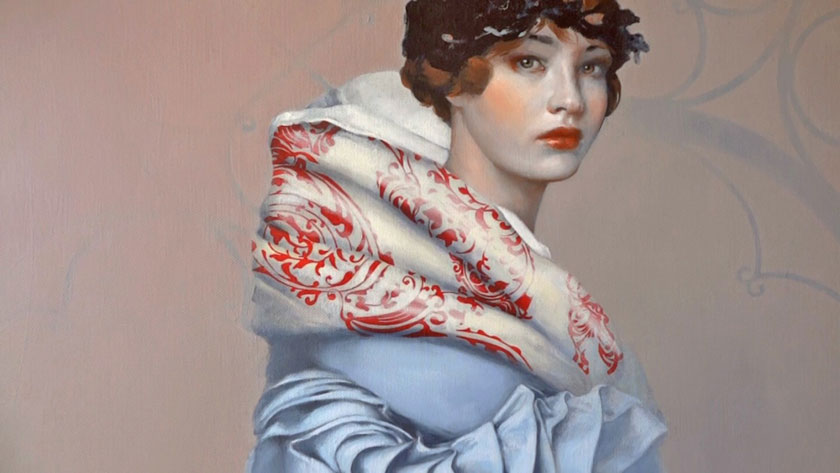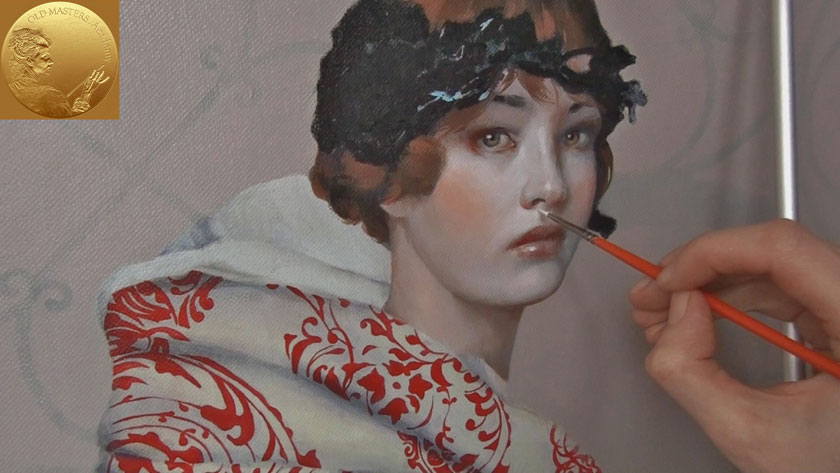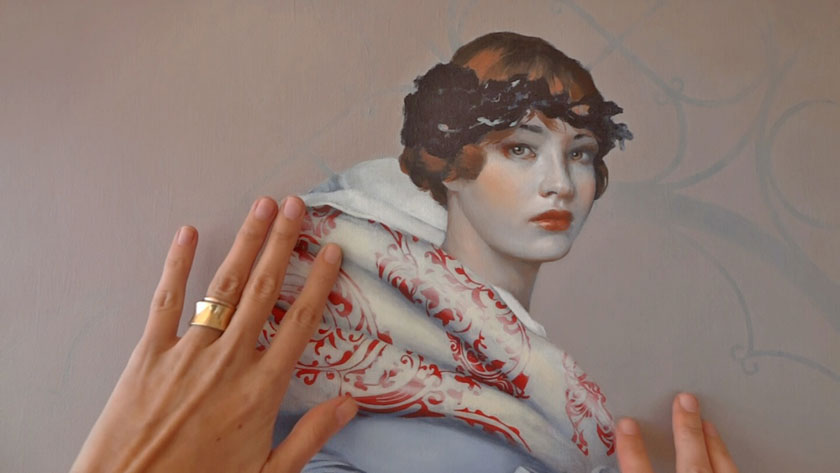Art Lesson 43, Part 6
Discover How to Paint a Girl Portrait
Learn how to paint like the Old Masters!
Old Masters Academy Online Course
Self-study, self-paced online video courseLifetime membershipOne-time payment: $487Enroll Now!Personal Tutoring online + Online Course
Unlimited tutoring by the Academy teachersLifetime membershipOne-time payment: $997Enroll Now!« Back to the Art Lessons List
How to Paint Highlights in Portraits
We are continuing our multi-layered painting. By the way, there is one more advantage of the proper, professional use of multi-layered oil painting techniques – if for any reason something goes wrong with the painting process, you just take a rag and get rid of the mistake. The lower layer would remain untouched. After that you can repeat the attempt without difficulties until the results are satisfactory.
When you have to remove an unsuccessful attempt, the thing you should be aware of is that taking off a new, fresh layer might be a challenging task. For this purpose use a soft, not nappy, cloth and with gentle movements remove the paint from the surface. Replace the stained cloth with a clean one. When the paint is almost removed, dip the cloth into a jar containing linseed oil and lightly remove the remains of the paint. If some particles of pigment are clogged in irregularities of the dry painted surface, be careful. Don’t rub the surface, especially if it’s done in thin glazing coats of paint – you want to avoid accidentally erasing an underlying dried layer.

Gradually you are placing colors layer after layer. To make the model more glamorous we can add make-up to her face. If you are into make-up you can play a little with the effects of cosmetics. There is plenty of room for improvising with tones and nuances in her face.

The generalized mass of hair should be given more specific features. Strands of hair are becoming more expressive. But we are going to keep the interpretation of hair style as simple as possible, making the hair just a dark color spot in the composition with minimal detail.
The forehead is completely dried, so you could easily add little strands of hair falling on her forehead.
There are final touches with the brush on the skin of the face: Titanium White, an opaque pigment, mixed with a tiny amount of semi-opaque Payne’s Gray to make the white a little bit cold and give it a grayish tint. This mix makes the lightened places look very solid and dense.

Despite the fact that the portrait was painted from a photograph instead of a sitter; a very picturesque effect has been created, like a portrait done of a live person. And this was quite a challenging task. If you are using photography as a base for the portrait try to avoid blind imitation of the photo image. There is no reason to replicate the colors of the photograph unless you are doing deliberate photorealistic painting. An imaginative artist uses oil paintings as a medium to enhance his piece of work, which is created from his imagination or out of the interpretations he might have drawn from the objects he sees. A professional artist with his set of oil paints can add life to the objects he paints. The use of colors and shades and highlights is very important in painting.
Highlighted places might be done with pure Titanium White to emphasize the most prominent areas on the face.




